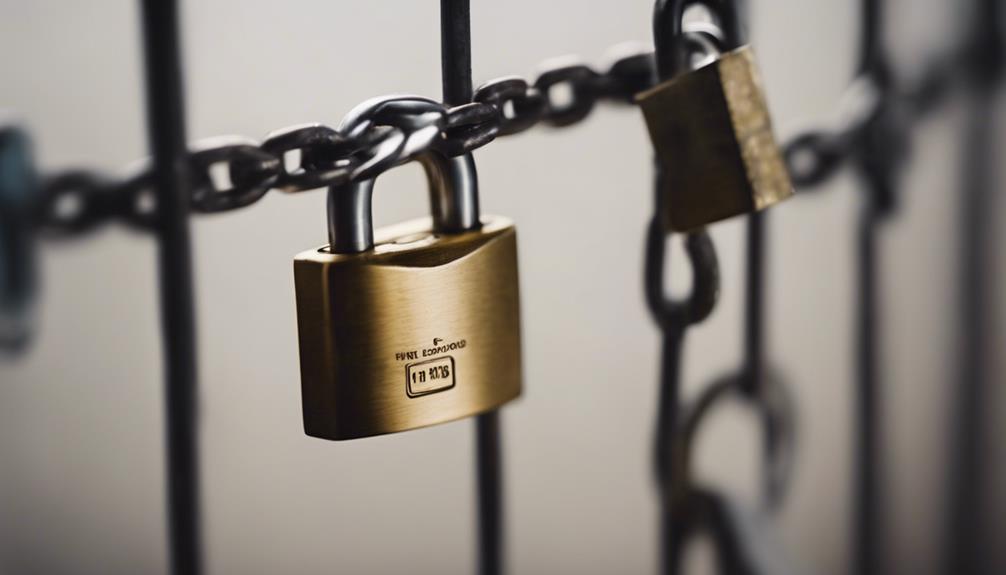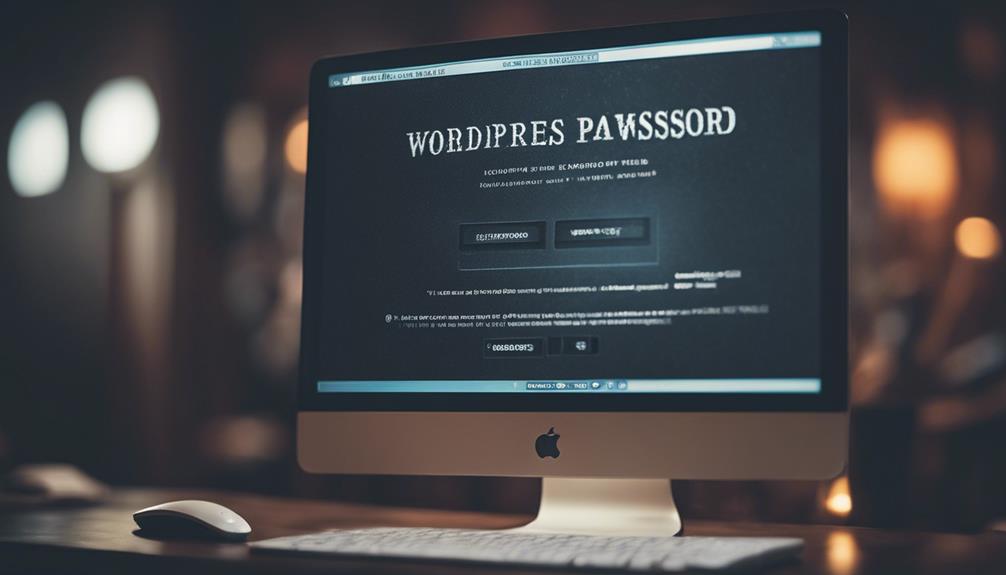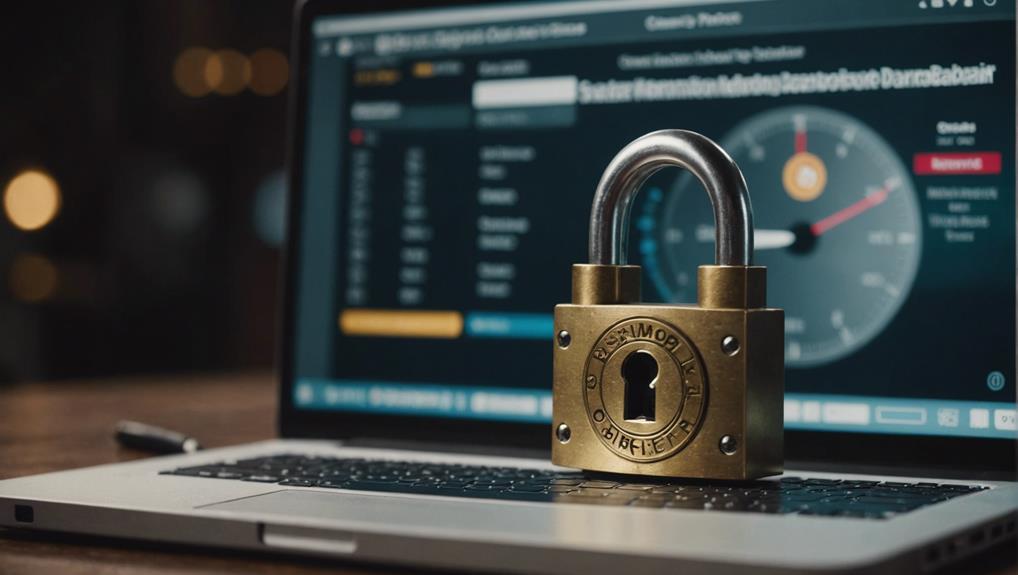To secure your WordPress site, start with strong passwords and plugin updates. Always choose reputable hosting with security features like SSL. Keep everything up-to-date for protection against vulnerabilities. Use unique usernames and 16+ character passwords, and store them securely. Set up off-site backups for extra safety. Test backups regularly for peace of mind. Limit login attempts and consider two-factor authentication for added security layers. Regular malware scans and prompt removal are essential. This guide gives you a solid foundation; more tips await for further enhancing your WordPress security.
Importance of WordPress Security
To guarantee the protection of your WordPress website, understanding the critical importance of WordPress security is vital. WordPress powers over 39.5% of websites on the internet, making it a prime target for hackers. Weak passwords and outdated plugins are common vulnerabilities that can compromise the security of your site. Ensuring that your login credentials are strong and regularly updating your plugins are essential steps to keep your website secure.
Security breaches can have severe consequences, including financial loss, damage to your reputation, and potential legal issues due to non-compliance with regulations. It's essential to prioritize security measures such as implementing security plugins like Wordfence and Sucuri. These plugins can greatly enhance the security of your WordPress installation by providing real-time monitoring, firewall protection, and malware scanning.
Protecting your WordPress website goes beyond just setting strong passwords; it involves staying proactive, keeping your site updated, and utilizing reliable security tools to defend against potential threats. By taking these security measures seriously, you can safeguard your website from malicious attacks and ensure a safe online presence.
Common Security Threats
Facing common security threats requires vigilance and important measures to safeguard your WordPress website effectively. Brute force attacks pose a significant risk, with a staggering 90,000 attacks on WordPress sites happening every minute.
Vulnerabilities in outdated plugins and themes contribute to 52% of WordPress security issues, emphasizing the importance of keeping all plugins and themes up to date. Weak passwords serve as a common entry point for hackers, highlighting the necessity of using strong and unique passwords for all accounts associated with your website.
To enhance your website's security, regularly updating WordPress core, plugins, and themes is crucial. These updates often contain security patches that help mitigate potential vulnerabilities. Additionally, implementing security plugins such as Wordfence and Sucuri can provide an extra layer of protection against common threats.
Secure Hosting Selection

When prioritizing a hosting provider for your WordPress website, it's crucial to choose reputable companies that offer robust security features such as SSL, Web Application Firewall (WAF), and DDoS protection.
Opting for managed WordPress hosting can provide you with automatic security updates and enhanced site protection. Consider cloud hosting services like Cloudways for advanced security measures and reliable performance.
Make certain that your hosting package includes SFTP access, malware protection, and regular security audits to safeguard your site effectively. It's vital to select a host that offers SSL certificates, firewall protection, and proactive security measures to establish a secure WordPress installation.
Update Core, Themes, Plugins
You need to prioritize updating your WordPress core, themes, and plugins regularly to keep your website secure. Outdated plugins are a common cause of vulnerabilities, making updates important for enhancing security and performance.
Enabling automatic updates for plugins can help guarantee that your site has the latest security measures in place.
Core Security Updates
Consistently updating WordPress core, themes, and plugins is essential for enhancing the security of your website. Security updates are important because 52% of vulnerabilities stem from outdated plugins.
These updates often contain security patches that protect your site from potential breaches while also optimizing its functionality. Enabling automatic updates for plugins can guarantee that you receive timely security enhancements without manual intervention.
Before updating, remember to back up your data to prevent any loss in case of unexpected issues during the update process. By keeping all components up to date, you not only reduce the risk of security breaches but also ensure the peak performance of your WordPress installation.
Plugin Update Importance
Consistently updating plugins, WordPress core, and themes is essential to fortifying the security of your website and safeguarding against potential vulnerabilities. Outdated plugins contribute to 52% of WordPress security vulnerabilities, underscoring the importance of timely plugin updates for enhanced security.
Security patches are commonly integrated into updates, highlighting the necessity of regular plugin updates to uphold website security. To streamline this process, consider enabling automatic updates for plugins, ensuring that your website has the latest security features.
Before initiating updates, remember to back up your data to prevent any potential data loss or complications during the update process. By staying proactive with plugin updates, you bolster your website's security and shield it from potential threats.
Strong Usernames, Passwords

When creating usernames and passwords for your WordPress site, prioritize security by incorporating strong and unique combinations. To secure your WordPress installation, it's important to avoid easily guessable usernames and opt for ones that don't contain common names or identifiable information. For passwords, aim for a minimum length of 16 characters to increase complexity and deter hackers. Incorporate a mixture of upper and lower case letters, numbers, and symbols to strengthen your passwords against brute force attacks.
Consider using password managers like Bitwarden or LastPass to securely store and manage your complex passwords. Additionally, generate secure usernames with the least privileges necessary to limit potential access points for hackers. By following these practices and implementing strong passwords and usernames, you can significantly enhance the security of your WordPress installation and reduce the risk of unauthorized access.
Off-site Backup Setup
When setting up off-site backups for your WordPress site, consider factors like:
- Backup frequency planning
- Storage location selection
- Recovery testing strategy
These points are vital for ensuring that your website data is securely stored and easily recoverable in case of emergencies.
Take the time to establish a robust off-site backup system to safeguard your website against potential data loss.
Backup Frequency Planning
For essential data security and disaster recovery preparedness, consider establishing a robust off-site backup schedule for your WordPress installation.
Daily backups are vital for ensuring data safety and preventing potential data loss in case of server issues. Off-site backups, especially when stored in cloud storage services like Google Drive or Dropbox, provide an additional layer of protection against ransomware attacks that often target on-site backups.
Implementing automated backup solutions simplifies the process and guarantees regular backups without manual intervention. By prioritizing a frequent backup frequency and utilizing off-site storage, you can greatly enhance your WordPress website's resilience to unforeseen events and mitigate the risk of data loss.
Storage Location Selection
Consider utilizing cloud storage services such as Dropbox, Google Drive, or Amazon S3 for your off-site backup setup to enhance the security of your WordPress installation. Storing backups in an off-site location protects your website from malware attacks, hardware failures, and maintains data integrity. Cloud storage offers added security by safeguarding your data against disasters, server failures, or physical damage to hardware.
Implementing regularly scheduled off-site backups is essential for disaster recovery and business continuity. By choosing a reliable cloud storage provider, you can rest assured that your WordPress website is safe and that your data is securely stored off-site, ready for recovery whenever needed.
Recovery Testing Strategy
To validate the effectiveness of your off-site backup setup, regularly conduct recovery testing to confirm data integrity and preparedness.
- Validate data integrity by regularly testing your backups.
- Mitigate data loss risks through consistent recovery testing.
- Enhance disaster recovery preparedness by verifying backup restoration processes.
Regular testing of your off-site backups is vital to safeguarding your WordPress installation against potential data loss incidents. With secure storage options and automatic backup scheduling, off-site backup setups provide redundancy and protection against cyberattacks. By maintaining a robust recovery testing strategy, you can fortify your website's resilience and ensure that your data is safe and recoverable in the event of an unexpected disaster.
Brute Force Protection
Strengthen your WordPress website's defense against unauthorized access attempts by implementing effective brute force protection measures. Brute force attacks are a common method used by hackers to gain access to your site by trying numerous username and password combinations. To combat this, consider using plugins that limit login attempts and automatically block suspicious IP addresses. Additionally, tools like Fail2ban can provide firewall-level blocking to prevent brute force attacks before they reach your site.
Enhancing username security with strong, unique usernames and ensuring complex passwords are in place adds an extra layer of protection. Consistently monitoring and managing your login security measures is vital to staying ahead of potential threats. By taking proactive steps to secure your WordPress installation, you can reduce the risk of falling victim to brute force attacks. Remember, prevention is key when it comes to maintaining the security of your website.
Malware Scanning

Regular malware scanning plays a vital role in safeguarding your WordPress installation by detecting and removing any malicious software present. By conducting regular scans, you can prevent security breaches and protect sensitive data on your website. Malware can greatly impact your website's performance, reputation, and user experience if not promptly identified and removed.
Utilize plugins like Wordfence and Sucuri that offer robust malware scanning features to enhance WordPress security.
Make malware scanning a routine part of your website maintenance to guarantee a secure and reliable online presence.
Promptly remove any malicious software detected during scans to maintain the integrity of your WordPress installation.
Two-Factor Authentication Setup
Detecting and removing malware is essential for keeping your WordPress installation secure; now let's explore setting up Two-Factor Authentication (2FA) for added protection. By requiring a second form of verification, 2FA adds an additional layer of security to your WordPress login process. Popular methods like SMS codes, authenticator apps such as Google Authenticator, and physical security keys can be used for this purpose. Even if your passwords are compromised, 2FA greatly reduces the risk of unauthorized access to your website.
To enable 2FA for your WordPress site, you can easily use plugins like Two Factor Authentication or Google Authenticator. Implementing 2FA not only enhances the security of your website but also provides peace of mind knowing that there's an extra barrier against potential security threats. Take the proactive step of setting up Two-Factor Authentication to fortify your WordPress login process and safeguard your site from unauthorized access.
Conclusion
Now that you've armed yourself with the tools to secure your WordPress installation, it's time to fortify your digital fortress and protect your online kingdom.
Just like a knight in shining armor protecting their castle from invaders, you too can defend your website from cyber threats.
Stay vigilant, stay updated, and always be prepared to safeguard your online domain.
Your website's security is in your hands, so wield your sword of knowledge and shield of protection with confidence.


